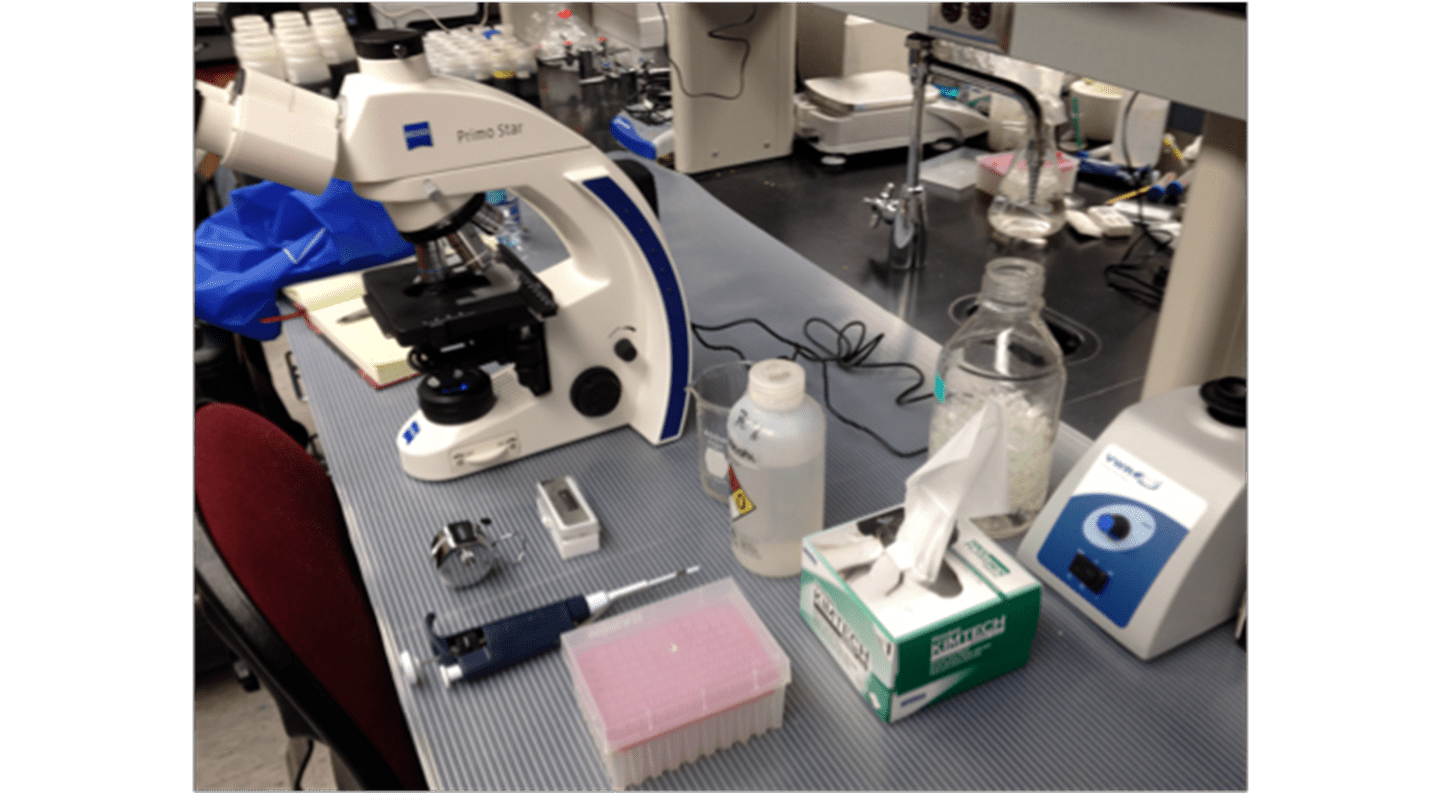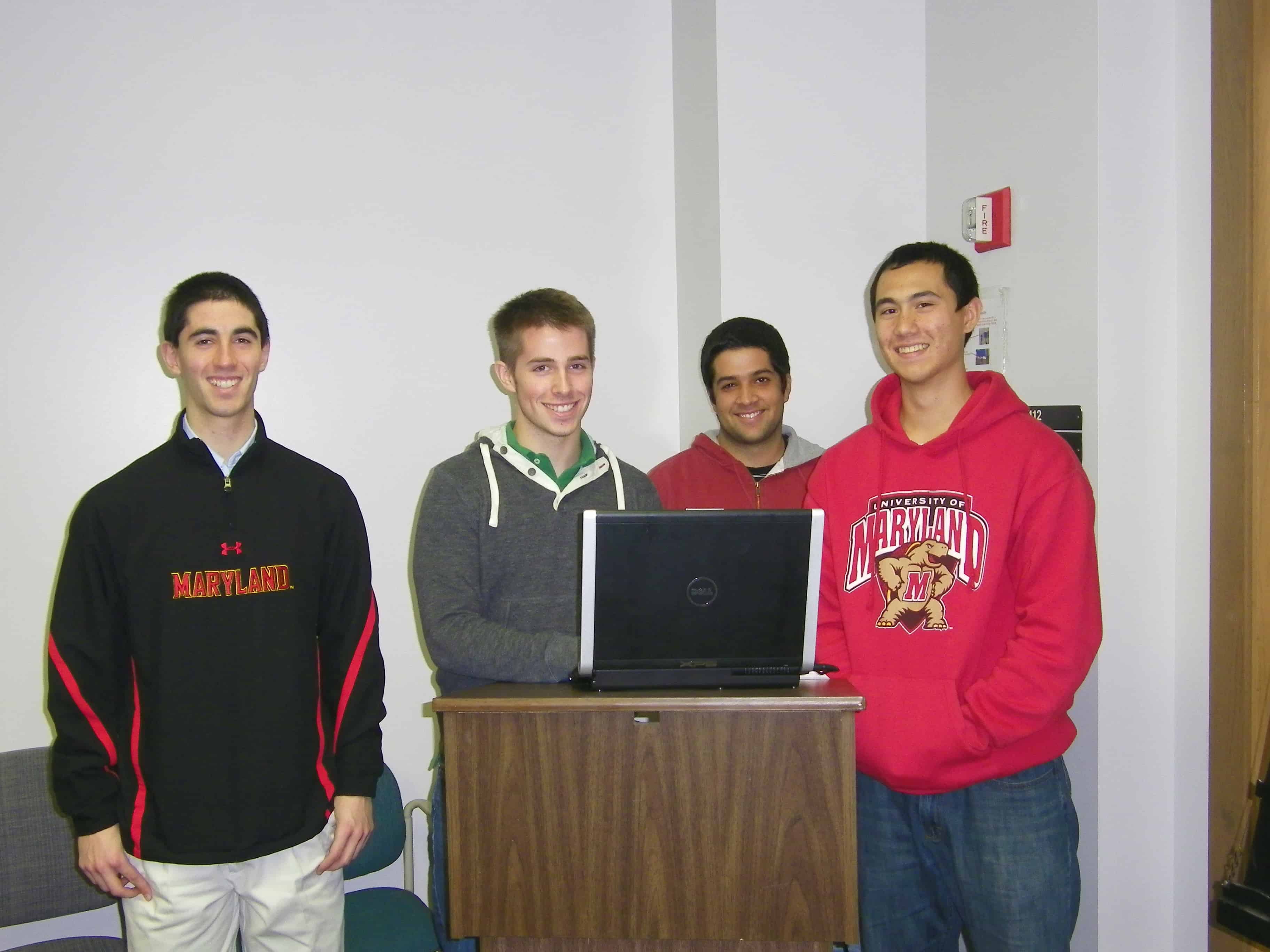On December 7th, the undergraduates conducting research in the vanEngelsdorp lab at the University of Maryland gave their final project presentations. The samples our undergrad team analyzed came from a study performed by Jeff Pettis of the USDA Bee Research Lab. The study was based on 6 different apiaries in North Dakota looking to see how differences in surrounding land types would affect the overall health of colonies. Three yards were in heavily agricultural areas, while the other three were surrounded by diverse plant species. One interesting outcome of this study documented that the amount of pollen collected from the more diverse apiary environments was nearly double of those in agricultural areas.
Andrew Garavito (biology major, graduating later this month) worked alone on a challenging project that dealt with sorting pollen from two of the North Dakota yards. His goal was to determine the % of corn pollen found in each sample while also determining differences in pollen types and concentrations between the two yards. First, he sorted the pollen of each sample by color and then examined each color under the microscope to determine the pollen type. Surprisingly, he hardly found corn pollen at all!
Through early summer to the beginning of August he identified the majority of pollen as belonging to the Fabaceae family (ex. soybeans, peas, alfalfa, peanuts, clover) and towards the end of the summer he identified mostly Asteraceae pollen (ex. asters, daises, sunflowers, lettuce, artichokes). In this instance, it’s apparent that Fabaceae blooms early in the summer while Asteraceae blooms middle to late summer. He also found that the Kunze yard had much higher levels of Fabaceae throughout the sampling season, possibly due to nearby agricultural fields. Despite this, the Kunze yard also had the greatest floral diversity between the two.

The remaining 3 undergrads worked on a very large project checking individual bees for Nosema. They were: Chris Riley an environmental science major, Ryan Wallace a biology major, and Julius Goldberg a double major in physiology and neurobiology and nutrition. They prepared the individual bee samples a little differently from the standard 100 bee protocol by grinding a single abdomen in a vial with a disposable pestle and adding 1 mL of DI water. They counted 400 individual bees in total from 4 different apiaries of the USDA North Dakota study. In order to ensure accuracy between readers, a count was performed on each sample 3 times, each by a different person. Their end goal was to compare the average millions of spores per bee count to Nosema prevalence and Nosema intensity.

Nathalie Steinhauer, our PhD student at UMD, worked her magic and provided them with an amazing statistical analysis of their data. She performed power analyses to compare the p-values between the traditional way (average millions of spores per bee – MSPB), intensity, and prevalence. It is preliminary, but it seems that prevalence (how many bees infected out of 10) is promising as a new marker of Nosema infections. They also found that the environment type of the apiary was an indicator of colony health. Apiaries with a good environment had less colonies die over the winter. In addition, there was no significant reader effect for Nosema counts.
I was very impressed by the amount and quality of work the undergraduates handled this semester. A big shout out and thanks to each and every one of you for your hard work and dedication! Also, we are lucky to have Julius Goldberg returning for more fun next semester along with a new group of undergraduate researchers. I look forward to another semester working with the undergrads!

